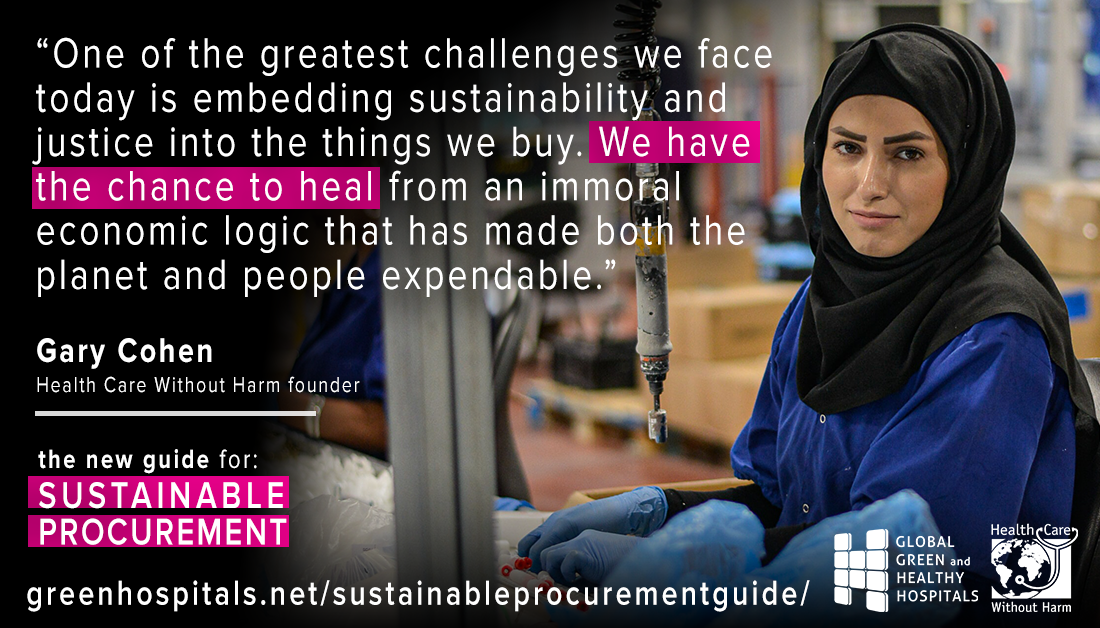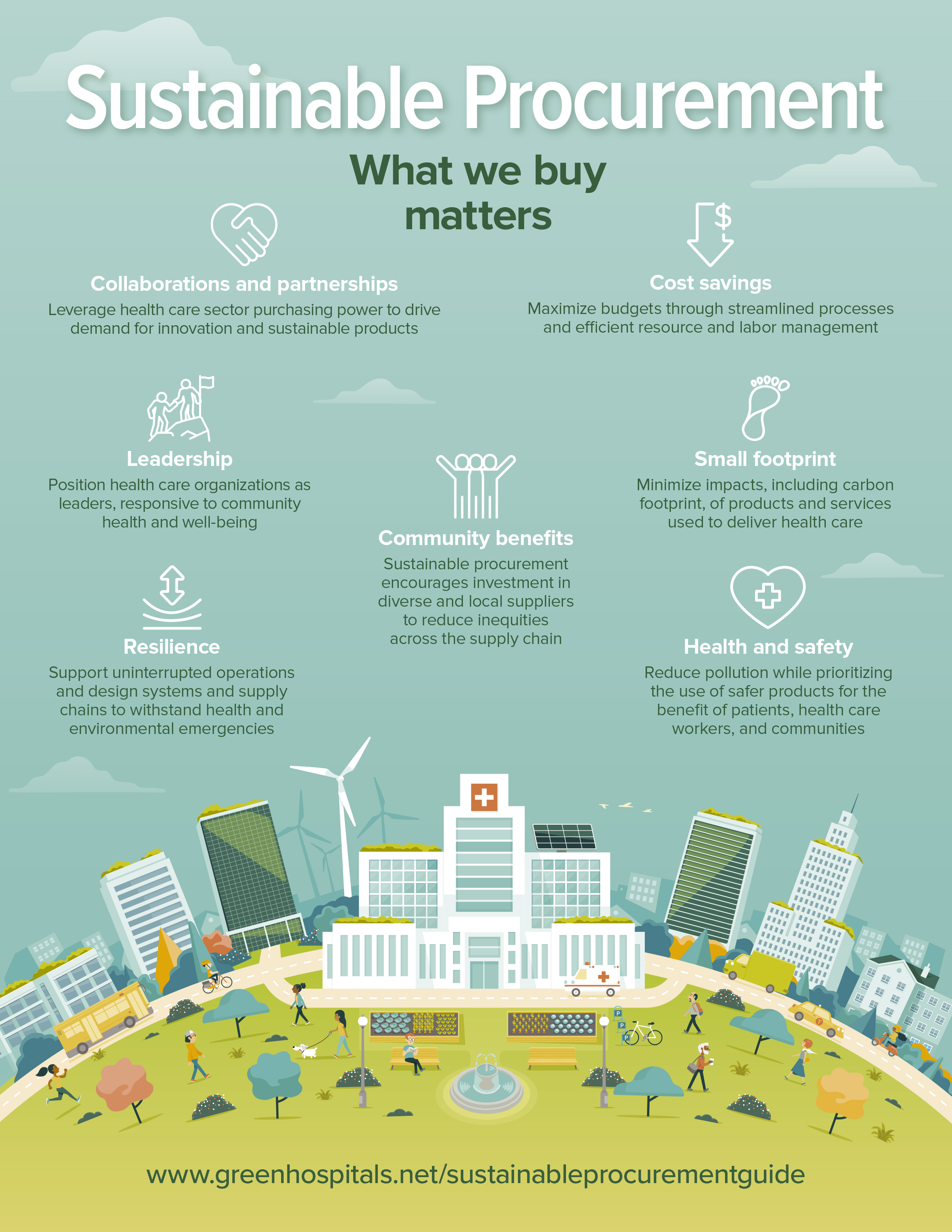Health care procurement can heal the supply chain. Our guide shows how
A groundbreaking new guide available for GGHH members, featuring stories from 25 health care organizations around the globe, offers a roadmap to develop a sustainable purchasing strategy that prioritizes community and environmental health and safety while reducing costs.

Every day, health care health care organizations make choices about the products and services they use, from medications, food, and hospital supplies, to the energy source used for lighting and powering operating rooms. Our collective purchasing power can shape the marketplace, increase demand for sustainable products, and embrace our broader healing mission.
The COVID-19 crisis exposed the fragility and vulnerability of our global supply chains. It also has given us an opportunity to move toward localized supply chains that not only reduce environmental harm but also provide local business opportunities and jobs.
A groundbreaking new guide, featuring stories from 25 health care organizations across the globe, offers a roadmap to develop a sustainable purchasing strategy that prioritizes community and environmental health and safety while reducing costs.
More than 70% of emissions from the health care sector are primarily derived from the health care supply chain – the production, transport, use, and disposal of goods and services that the sector consumes. – “Health care climate footprint report” by Health Care Without Harm and Arup.
When deciding on products and services, health care organizations should consider not only effectiveness but also overall environmental footprint, staff and patient safety, and community impact.
Two years in the making, this guide was developed by Health Care Without Harm, Global Green and Healthy Hospitals, and Practice Greenhealth, with more than 40 experts contributing to its development. It will be available in the following months in Chinese, Portuguese, and Spanish.
The Sustainable Procurement Guide:

